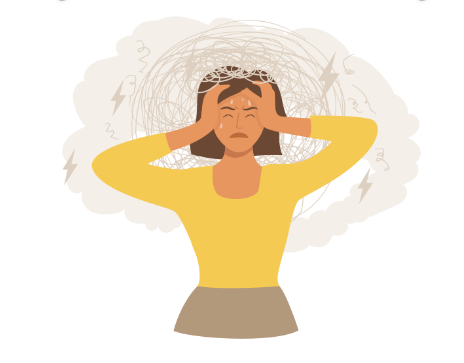Have you ever had an emotional reaction that felt bigger than the situation? Maybe someone said something small, but it felt like a punch to the gut. Or maybe you shut down completely when conflict arises, even if nothing aggressive was said. These moments are known as emotional triggers, and while they’re often uncomfortable, they hold valuable clues about what still needs healing inside of us.
Rather than trying to avoid or suppress your triggers, what if you got curious about them instead?
What Is an Emotional Trigger?
An emotional trigger is any experience—words, actions, tone, body language—that brings up a strong emotional response, often tied to a past wound or unmet need. Triggers can spark feelings of anger, fear, shame, abandonment, rejection, or worthlessness. They're often rooted in earlier experiences that left a mark on our nervous system.
Example: You might feel instantly panicked when someone raises their voice—not because of the person in front of you, but because it reminds your nervous system of past conflict or trauma.
The Science Behind Triggers
Emotional triggers are tied to the brain’s limbic system, particularly the amygdala, which processes threat. When we’re triggered, the body can go into fight, flight, freeze, or fawn mode, even if the situation isn’t actually dangerous. This is the nervous system’s way of trying to protect us—even if it’s responding to outdated information.
The body doesn’t always distinguish between a present moment and a past memory. That’s why emotional triggers feel so intense: they’re often tangled up with unprocessed pain.
Why Triggers Are Actually Invitations to Heal
It may not feel like it at the time, but being triggered is an opportunity.
A trigger is your body saying:
- “Something here reminds me of past pain.”
- “There’s a wound that hasn’t been fully acknowledged.”
- “You’re touching a place where I haven’t felt safe.”
When you pause and listen to that message instead of pushing it away, you begin the process of healing. You can meet the wound with compassion instead of shame.
Common Emotional Triggers (and What They May Reveal)
Here are some examples of common triggers and the deeper emotional needs they might point to:
TriggerPossible Root EmotionWhat It Might ReflectBeing ignoredRejection, abandonmentFear of being unlovableBeing criticizedShame, inadequacyWounds around self-worthBeing controlledPowerlessness, angerA history of feeling unheardSomeone being emotionally distantInsecurity, fearAttachment wounds or fear of lossNot being appreciatedResentment, sadnessA need for recognition or value
How to Work with Emotional Triggers
Instead of judging yourself for being triggered, try slowing down and getting curious. Here’s a gentle approach:
1. Pause and Breathe
Before reacting, take a few deep breaths. This helps regulate your nervous system and gives you a chance to respond instead of react.
2. Name the Feeling
Label the emotion: “I feel rejected,” “I feel unsafe,” or “I feel not good enough.” Naming it brings it out of the body and into awareness.
3. Ask, “Where Have I Felt This Before?”
Often, a current trigger is echoing a much older emotional wound—sometimes from childhood or a past relationship.
4. Offer Compassion
You might place a hand on your heart and say, “Of course I feel this way. This hurts, and that’s okay.” Self-compassion is essential.
5. Journal or Reflect Later
Once you’re calm, explore the experience in writing: What was said or done? What did it bring up in you? What do you need?
6. Practice Boundaries
Sometimes, triggers point to a real-time boundary that needs to be set. Healing also means learning how to advocate for your needs.
You’re Not Broken—You’re Waking Up
Being triggered doesn’t mean you’re broken or “too sensitive.” It means your body is wise enough to alert you to something unresolved. The more you work with your emotional triggers, the more empowered you become. What once felt overwhelming starts to feel like a guidepost—a signal pointing you toward deeper self-understanding and peace.
Emotional triggers are like spiritual GPS signals. They’re not there to sabotage you—they’re trying to show you where love, attention, and healing are needed. When you stop fearing your triggers and start listening to them, your emotional life transforms.
Healing isn’t about becoming "untriggerable". It’s about becoming more compassionate, more aware, and more equipped to meet your own needs.

